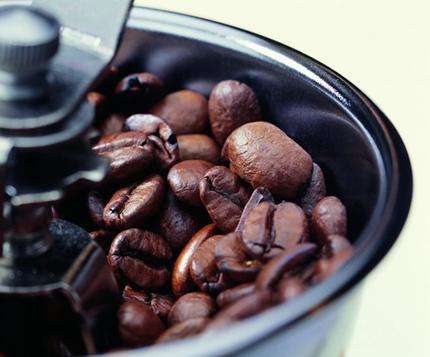Where did the Rwandan coffee come from?
Pay attention to coffee reviews (Weixin Official Accounts vdailycom ) and find a beautiful cafe to open your own shop
How did Kenya coffee come about?
Coffee was brought to Rwanda by German missionaries in 1904, but it was not until 1917 that Rwanda's coffee production was large enough for export. After World War I, the League of Nations Mandate revoked German colonial rights over Rwanda and transferred them to Belgium. Rwanda's coffee is exported to Belgium.
The first coffee tree was planted at Mibirizi Monastery in Cyangugu Province, which became the name of Rwanda's first coffee variety, a variant of Bourbon coffee. Coffee cultivation gradually expanded to Kivu and eventually to Rwanda as a whole. By the 1930s coffee was becoming a staple crop for producers, as was the case in another Belgian colony, Burundi.
The Belgian government imposed strict export controls and high taxes on coffee farmers, forcing Rwanda to move towards high-yield, low-quality, low-cost coffee production. Because Rwanda's export volume is very small, coffee has a relatively large influence and importance on farmers. Rwanda's infrastructure is quite limited, so it is not easy to produce high-quality coffee. At one time, there was no coffee wet treatment plant in Rwanda.
By the 1990s, coffee had become Rwanda's most valuable agricultural export, but something happened that almost destroyed the coffee industry. The 1994 genocide, which cost nearly a million lives, and the collapse in global coffee prices had a huge impact on the coffee industry.

Impact of the coffee industry on Rwanda's recovery
Coffee production has had a positive impact on Rwanda's overall recovery following the genocide. The global spotlight on Rwanda, coupled with foreign aid, has led to a strong focus on the coffee industry. New wet processing plants were built in the country, and people began to focus on the production of high-quality coffee. The government has become more open to the coffee industry, and global fine coffee buyers have become interested in the coffee here. Rwanda is the only country in Africa to have hosted a Cup of Excellence competition, and through its online bidding system, buyers can find the best coffee batches and promote them to the market.
The first wet treatment plant was built in 2004 with assistance from the United States Agency for International Development (USAID), and more have sprung up since then. There are now about 300 wet treatment plants in Rwanda.
The Partnership of Enhancing Agriculture in Rwanda through Linkages (PEARL) was also successful in sharing knowledge and training young agronomists, which eventually evolved into the Sustainable Partnerships to Enhance Rural Enterprise and Agribusiness Development (SPREAD), both focused on Butare producing areas. Rwanda is known as the "land of a thousand hills", and it has the latitude and climatic conditions to grow excellent coffee. However, the depletion of soil in many places and the difficulty of transportation greatly increased the production cost.
When coffee prices rose in 2010, Rwanda (and many other countries) faced an increasing challenge-the coffee industry did not have enough incentive to improve quality. This is because when the market is willing to pay a premium for coffee, there is a way to profit even from low-quality coffee, so coffee farmers have no reason to spend money on quality. Yet in recent years Rwandan coffee has been excellent. Even though Rwanda has some kind of Robusta, most of it is water-washed Arabica.
Coffee from Rwanda
Rwandan coffee, in its washed arabica form, is of absolute quality. As far as Africa is concerned, its coffee industry stands out because the country thrives on producing the best possible coffee beans.
The taste of Rwandan coffee is described as "grassy" with tropical climate characteristics. The country's fertile soil and climate are conducive to plant growth, and coffee trees seem driven or forced to grow upward, as well as growing too fast to produce the best beans. But anyway, the soft, rich flavor of the country's coffee is excellent.
Premium coffee comes from washed Arabica beans
Rwandan coffee has a unique and perfect flavor.
Flavor: Soft, aromatic, full grain
Baking: Deep baking recommended
Overall: Good
Although the sack on the package is only printed with a few simple words, it has quite profound historical significance behind it. Rwanda is located in the south of the equator in central Africa and is an inland country. The Congo River and Nile watershed run through the west of Rwanda from north to south, with an average altitude of about 2700 meters. The western slope of the watershed drops to Kivu Lake and Luzi Valley, which is part of the Great Rift Valley.
Lake Kivu is the highest lake in Central Africa. Rwanda is still a backward country at present, but under the President's Vision 2012 and 2020 strategy, it is expected to have a good vision. The word OCIR can be clearly seen on this batch of packaging. It is an organization of the Rwandan government responsible for agriculture-related industries, including the promotion of fine coffee. It belongs to the Rwandan Ministry of Commerce. Beautiful view over Kivu Volcanic Lake
Another noteworthy thing on the package is that there are a series of words related to the United States. This is the United States Assistance Program (USAID). Because of this plan, Rwanda's fine road has also gone smoothly. OCIR has referred to many successful ways in order to improve the quality of exports. Among them, the mechanism of establishing cooperatives is indispensable to the road to fine coffee. Here, farmers are provided with an environment for education, large-scale water treatment plants have been built, Professional cup test room... Wait.
The slightly highland beans that have always been favored, the Grand Q Competition Champion Manor in 2005, etc. are all single-handedly organized by this private company, and this batch of SICAF printed on it is also operated by NKG. Rwanda's coffee grading system is different from that of other African countries. In addition to hand-selected differentiation, cup test is needed to evaluate the grade difference, while Lu's grade is only A, B and C. This batch of 100% Bourbon Mount Kumgang, according to cup test procurement experience, It will be one of the favorites of another wave of coffee lovers, with its thick Body, fruity acidity and complex variability in the mouth.
The following is the cup forecast and basic information:
Dry aromas: dark chocolate, hazelnut (nutty), fruity persistent, peach
Wet fragrance: woody, creamy, nutty, pepper, mango sweet
Sip: Melon-like sweetness with coating properties... The acidity is bright and obvious, with a slight astringency in the front part. Creamy sticky body, black tea aroma throat rhyme continued to be strong and solid.
Important Notice :
前街咖啡 FrontStreet Coffee has moved to new addredd:
FrontStreet Coffee Address: 315,Donghua East Road,GuangZhou
Tel:020 38364473
- Prev

What are the characteristics of coffee in Rwanda
Following Kaiping (official Wechat account vdailycom) found that the coffee harvest season for coffee fruits at the beautiful cafe opened its own shop is during the main rainy season in the area, from March to the end of May. During the harvest season, farmers spend most of their day picking coffee fruits by hand. In the afternoon, the farmer held the coffee fruit in a traditional basket made of banana leaves.
- Next

Introduction to aroma planting of Colombian Coffee varieties
Follower Cafe (official Wechat account vdailycom) found that the Beautiful Cafe opened its own shop in Columbia, a small South American country that produced the world's most famous coffee. Coffee has become a major export here. Some of the things Colombians like to talk about most, except for their football, which was once one of the top football in the world, is the coffee they are proud of.
Related
- Detailed explanation of Jadeite planting Land in Panamanian Jadeite Manor introduction to the grading system of Jadeite competitive bidding, Red bid, Green bid and Rose Summer
- Story of Coffee planting in Brenka region of Costa Rica Stonehenge Manor anaerobic heavy honey treatment of flavor mouth
- What's on the barrel of Blue Mountain Coffee beans?
- Can American coffee also pull flowers? How to use hot American style to pull out a good-looking pattern?
- Can you make a cold extract with coffee beans? What is the right proportion for cold-extracted coffee formula?
- Indonesian PWN Gold Mandrine Coffee Origin Features Flavor How to Chong? Mandolin coffee is American.
- A brief introduction to the flavor characteristics of Brazilian yellow bourbon coffee beans
- What is the effect of different water quality on the flavor of cold-extracted coffee? What kind of water is best for brewing coffee?
- Why do you think of Rose Summer whenever you mention Panamanian coffee?
- Introduction to the characteristics of authentic blue mountain coffee bean producing areas? What is the CIB Coffee Authority in Jamaica?

